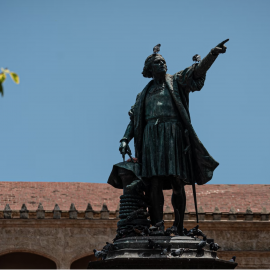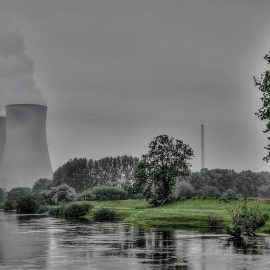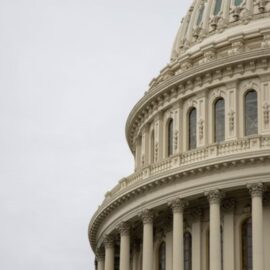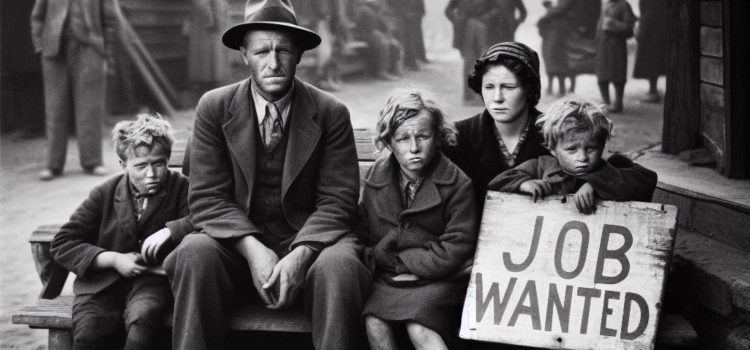
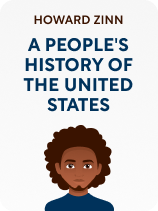
This article is an excerpt from the Shortform book guide to "A People's History of the United States" by Howard Zinn. Shortform has the world's best summaries and analyses of books you should be reading.
Like this article? Sign up for a free trial here.
What’s the history of the Great Depression and the New Deal? Did the New Deal truly solve the problems caused by the Depression?
Howard Zinn analyzes the Great Depression and the New Deal, highlighting the surge in labor unrest and activism. Despite the introduction of social programs, the New Deal ultimately favored elite interests and failed to address racial issues, particularly the ongoing neglect of Black Americans.
Read more to learn more about this historical perspective.
The Great Depression and the New Deal (1929-1939)
Zinn places his history of the Great Depression and the New Deal in the context of the economic and political circumstances of the late ’20s through the ’30s that saw significant shifts in the American labor movement.
The Great Depression
The activity and militancy of the American labor movement tended to fluctuate along with the desperation of workers and the state of the economy. Therefore, the Great Depression—a severe economic downturn that began in 1929 and lasted over a decade—caused labor unrest to skyrocket to an all-time high. For the first several years of the depression, elites in business and government had no clue what to do, leaving the American people to fend for themselves. Communists, socialists, and labor activists organized their communities to support one another, engage in massive, citywide strikes, and pressure elites to make concessions.
Some activists didn’t coordinate with Black Americans during the depression—they either weren’t interested or worried that doing so would alienate potential white, working-class supporters. The Communists were one of the few groups who made a serious effort to build a cross-racial coalition during this era, secretly helping black laborers organize themselves.
(Shortform note: While the upsurge of union membership and labor action during the Great Depression was sudden, scholars argue it wasn’t spontaneous. Instead, the surge was built on years of smaller scale, long-term organizing work. Even during the comparatively labor-unfriendly 1920s, labor and left activists continued working to organize various workplaces and industries even in the face of setbacks and defeats. This display of commitment built trust between workers and organizers, meaning that once the depression hit and more workers wanted to strike and unionize, they knew who to go to.)
The New Deal
Concessions to the American public came in the form of the New Deal, a series of laws and social programs under President Franklin Delano Roosevelt designed to help the country recover. However, Zinn argues the New Deal was still ultimately a project by and for elites—it shared just enough wealth and power with the American people to prevent all-out rebellion while centralizing power in the federal government via appointee-only bureaucracies. In addition, the New Deal largely ignored the plight of Black Americans—Roosevelt needed the support of Southern segregationists to pass his desired policies, so he didn’t pursue anti-segregation or anti-lynching measures.
For example, the Wagner-Connery Act in 1935 legalized labor unions and formalized the process of labor-management negotiations. This law provided some concessions to labor—employers could no longer fire workers for being union members, for example. However, it also channeled popular energy away from using strikes to cause broad social change and toward internal union politics and negotiating financially beneficial contracts.
(Shortform note: While people today often view the New Deal as a coordinated ideological project, in reality it was much less clearly defined and more based on trial and error. When FDR was first elected in 1932, he didn’t have a clear vision of what the New Deal was—instead, he decided to try a large number of ideas and projects to see what worked and what didn’t. During the first two years of FDR’s presidency, New Deal projects were smaller and generally more financially conservative. It was only in 1935, in the face of growing labor unrest and political pressure, that FDR began to adopt many of the progressive social programs the New Deal is known for today.)

———End of Preview———
Like what you just read? Read the rest of the world's best book summary and analysis of Howard Zinn's "A People's History of the United States" at Shortform.
Here's what you'll find in our full A People's History of the United States summary:
- A bottom-up view of American history focusing on the people, not the politicians
- How Indigenous people, Black Americans, women, laborers, and activists lived
- Why social movements of the 60s and 70s failed to create lasting change

